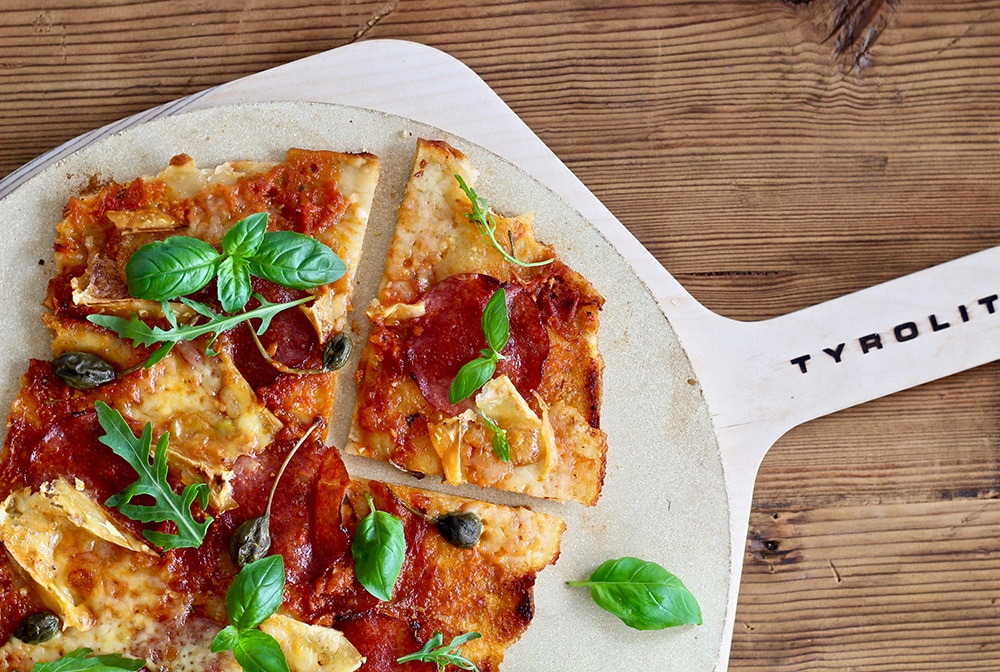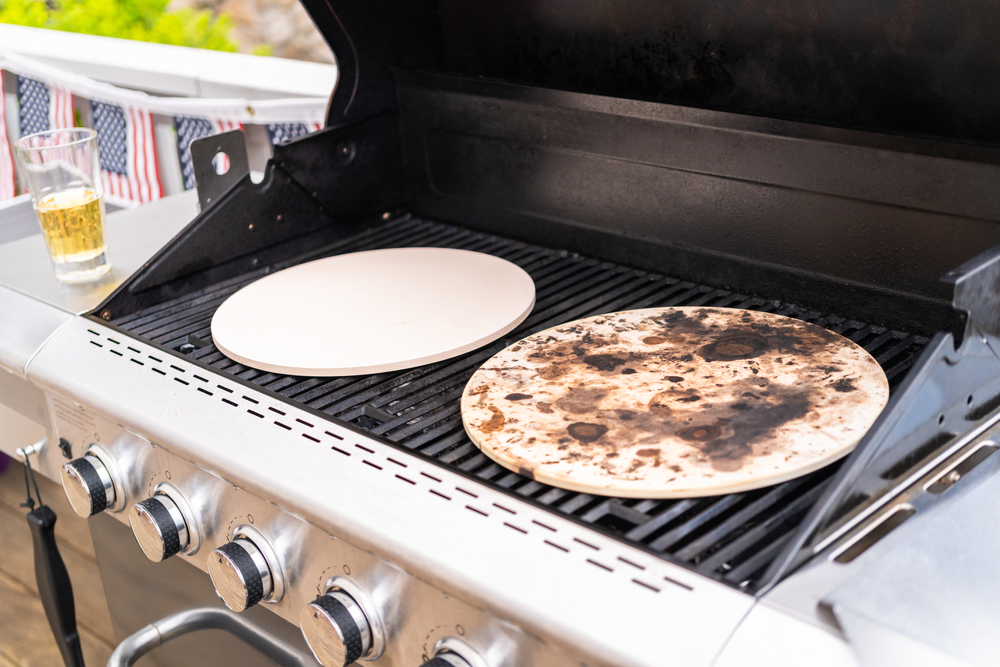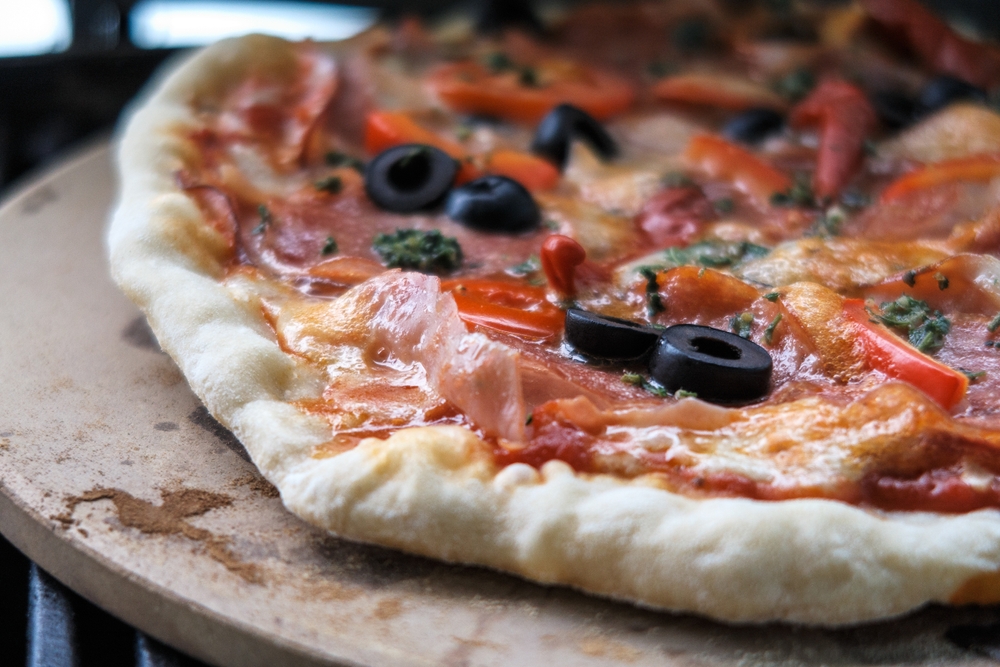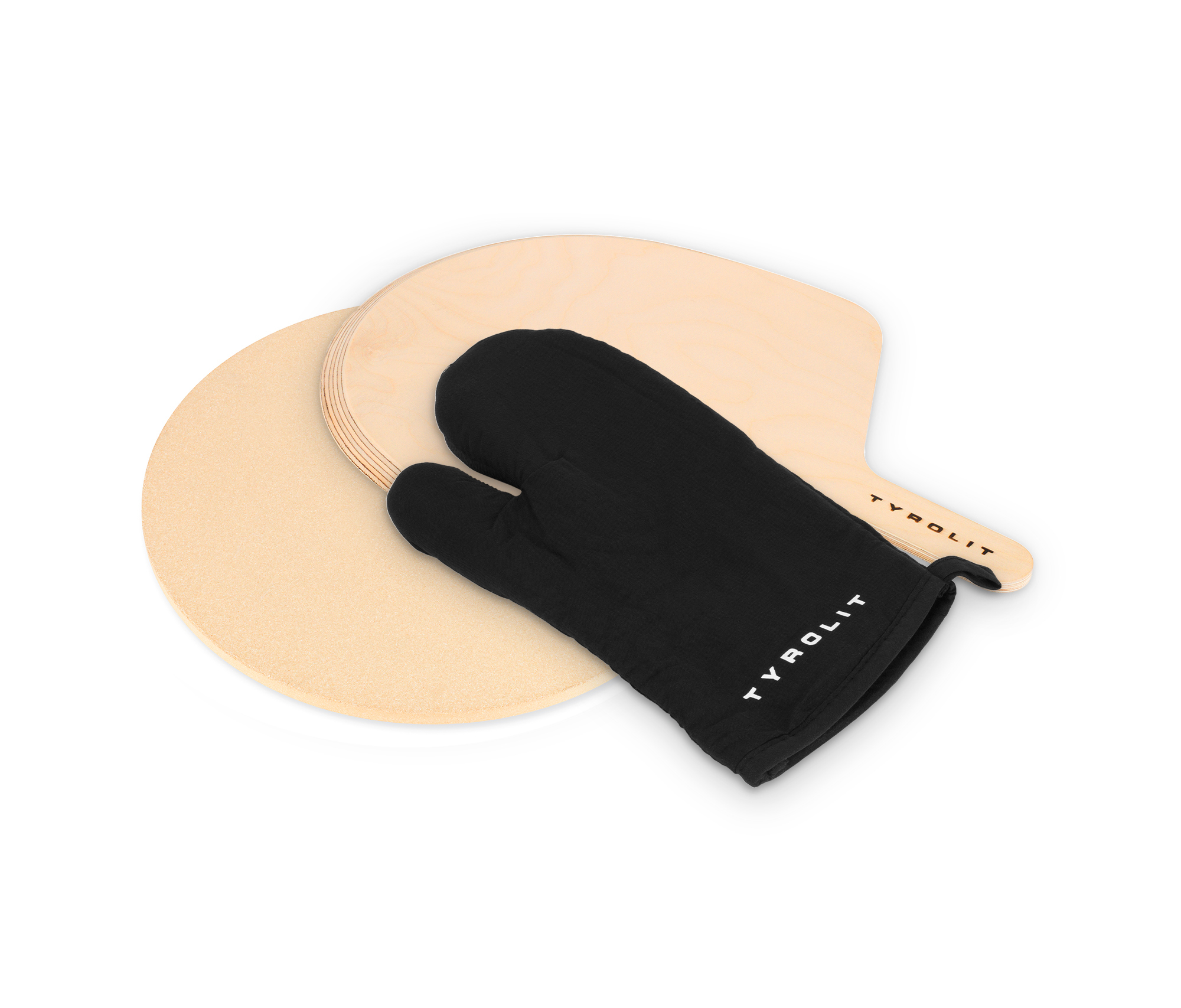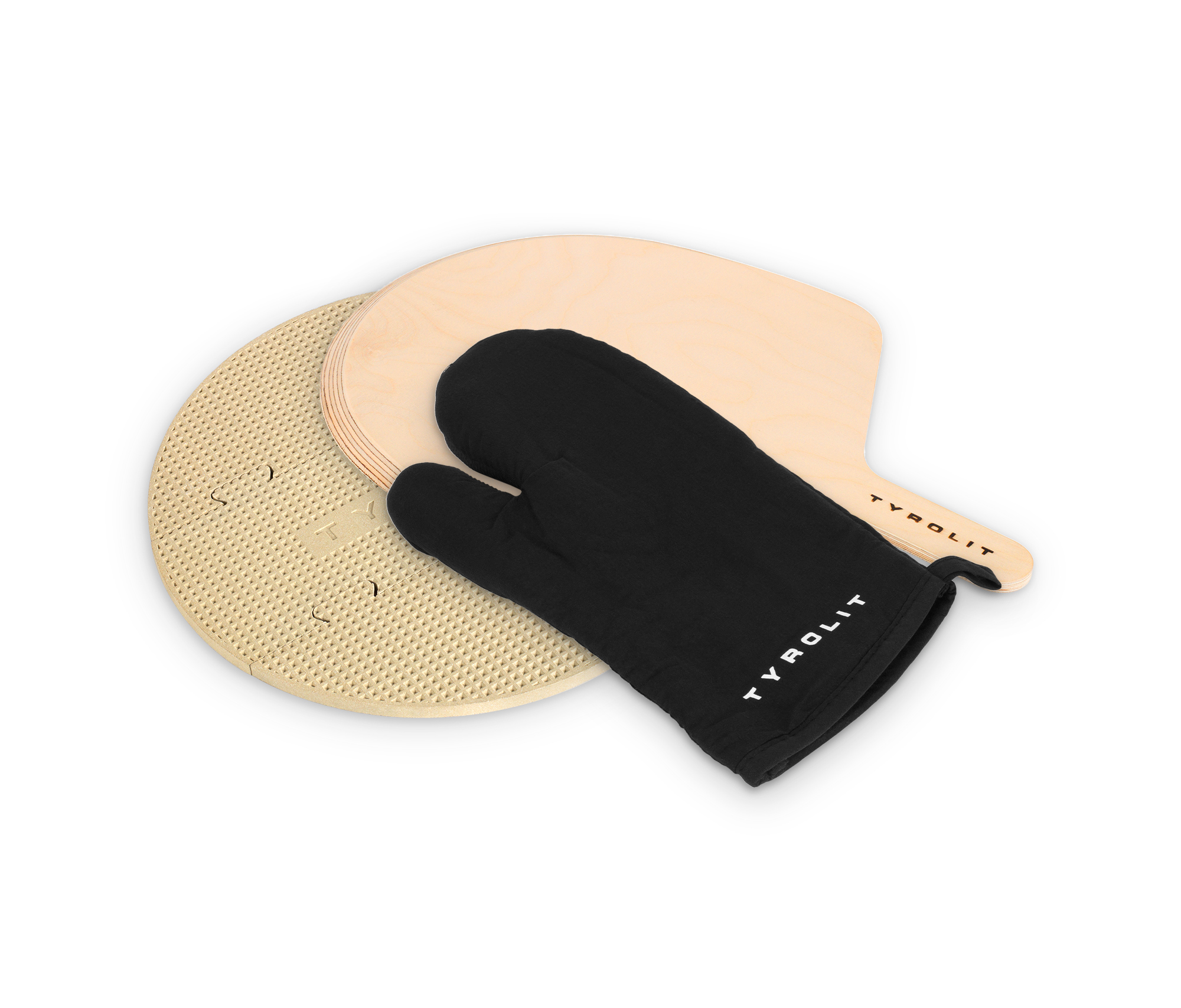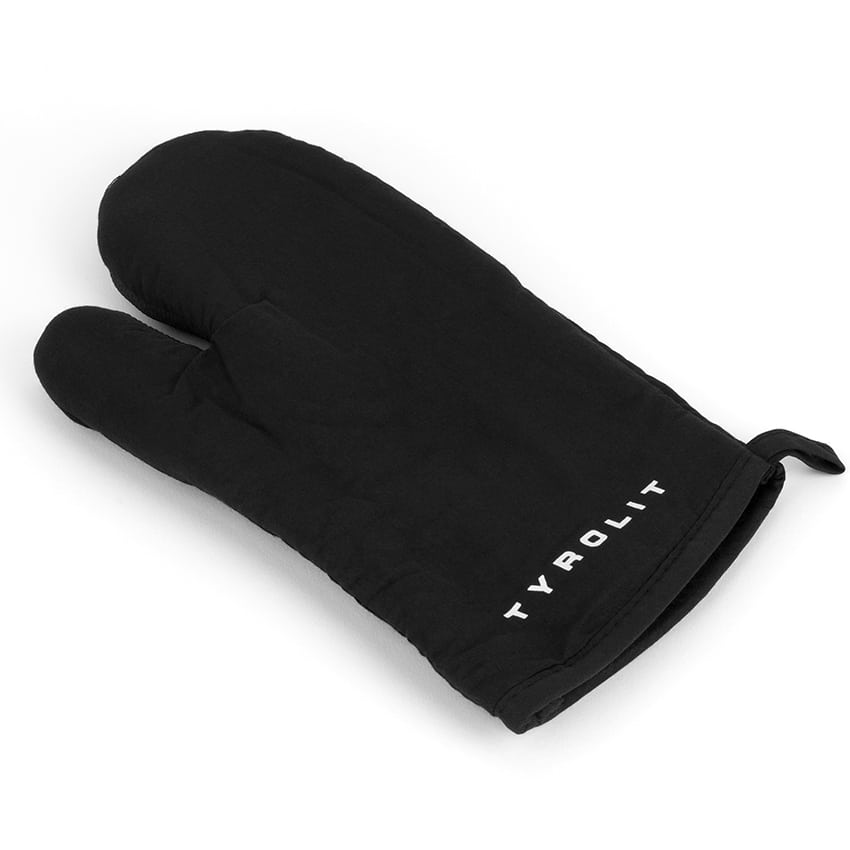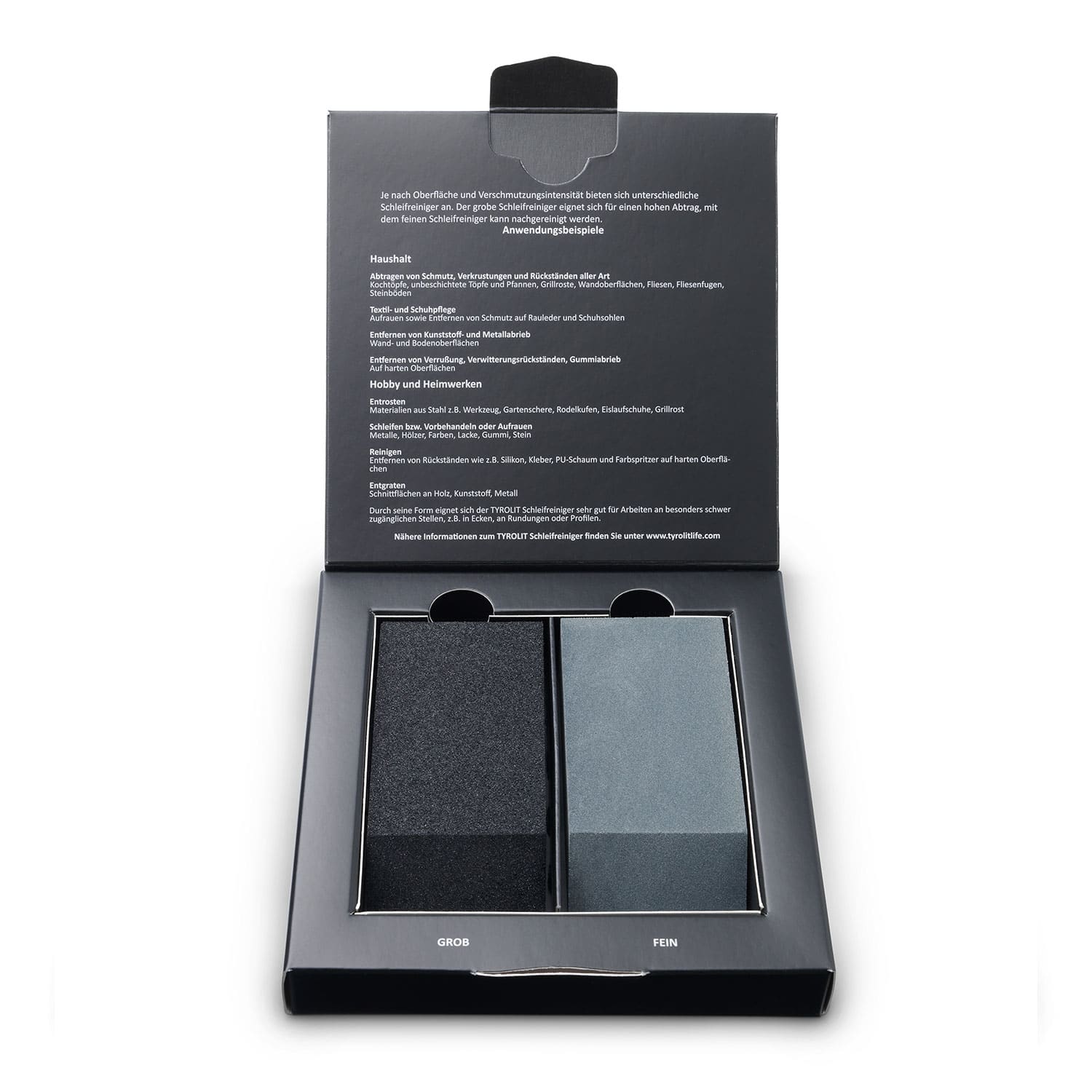Pizza stone on the gas grill – a pizza from the grill?
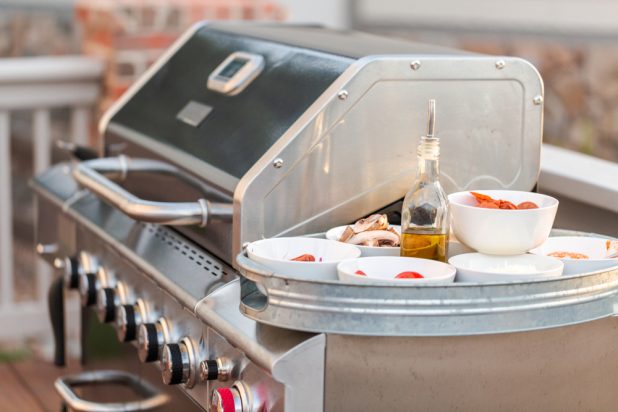
Would you like to give your next barbecue party that special something and surprise friends and family with a pizza stone on the grill? This may sound unusual at first, but not only the oven, but also the grill is ideal for baking crispy pizzas on the pizza stone. There is no need for a charcoal grill – the gas grill can also be used here.
In this post, we will show you what you should consider when choosing a pizza stone and how you can use your grill as a pizza oven. In addition, you will learn all the steps to make a perfect pizza and make the pizza stone fit for the next use.
Why use a pizza stone on the grill?
Pizza is most commonly baked at home in the oven on a baking sheet. However, in comparison to a pizza baked on a pizza pan, using a pizza stone results in a crispy and evenly baked crust. Moreover, cooking on the grill, particularly with charcoal, adds a pleasant, subtly smoky flavor.
But these are not the only advantages of a pizza stone: it is also ideal for preparing other treats such as crispy focaccia or juicy flatbread – the perfect addition to salads, dips and more at the barbecue. The stone ensures perfect heat distribution and gives your baked goods a crisp crust.
The pizza stone is thus far more than just another grilling accessory. Once you have tried it, you won’t want to be without the pizza stone at your BBQs.
Charcoal, electric or gas grills: which grills are suitable for pizza baking?
Whether you own a Weber charcoal kettle grill made of stainless steel, an Obi electric grill, a gas grill, or even a ceramic grill from Kamado Joe, a pizza stone will enable you to bake a pizza just like in an Italian pizzeria. It is essential for the grill to have a lid to prevent heat from escaping. However, the key to culinary success is also using the correct stone.
A cordierite pizza stone, such as the one we offer at Tyrolit Life, is particularly heat-resistant and is perfect for use on the gas grill or on other grills. Chamotte can also be used for pizza stones. However, due to its somewhat greater robustness during temperature fluctuations and the finer pore size, which makes cleaning easier, our choice of material fell on cordierite.
When selecting a pizza stone, also consider its size to ensure it fits your grill optimally and provides ample space for your pizza. Additionally, the pizza stone should leave at least 2 centimeters of clearance on all sides of the grill grate, whether it’s a gas grill or other types of grills, to prevent heat buildup. Our space-saving FLEX pizza stone is thus ideal for grills: it’s 3-piece and can be used very flexibly.
Cordierite pizza stone – All details about the material
In this article, we delve into the world of pizza baking, with an emphasis on the traditional pizza stone that forms the basis for crispy, delicious pizzas. You will also learn about the benefits of cordierite.
Prepare the pizza stone for the grill
Before you start grilling, you should prepare your pizza stone. First, clean it of any possible residues, especially if it has not been used for a long time. Use a dry cloth for this purpose and a soft brush for more stubborn dirt.
You can also lightly and superficially moisten the pizza stone for cleaning. For the following use, make sure that the stone is completely dry before placing it on the grill: a wet surface could lead to cracks.
If you have taken these points into account, you can already start.
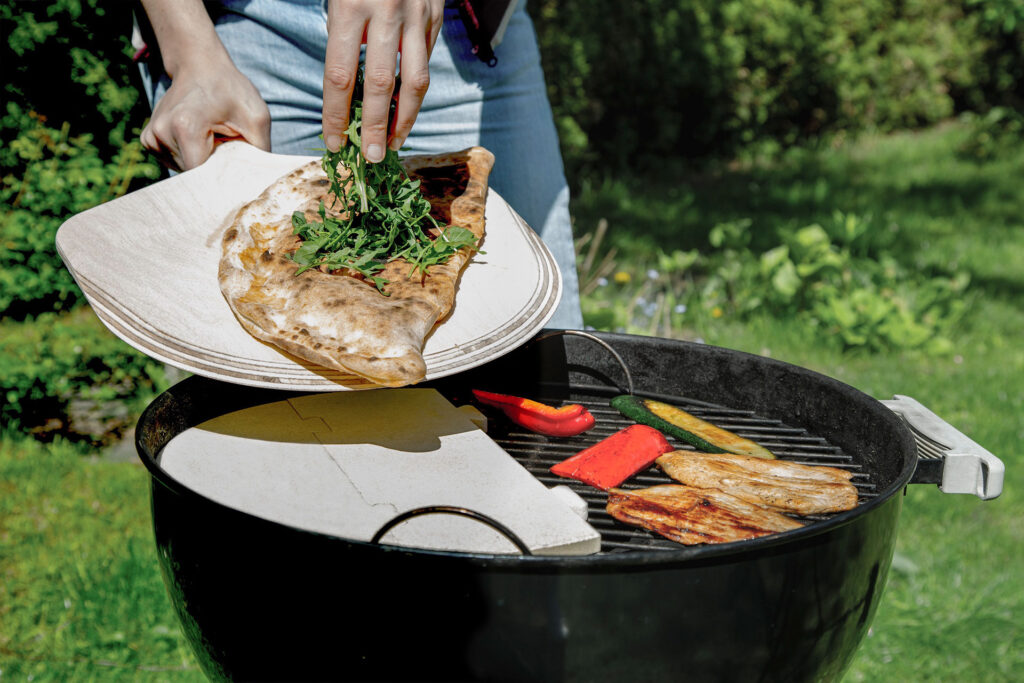
Preheat the pizza stone – for how long and at what temperature?
Now it’s time for the hot phase: the first step is to preheat the pizza stone. This is important so that your pizza cooks evenly and the pizza base becomes crispy.
Place the pizza stone in the middle of the still cold grill and preheat it to high temperatures (approx. 300°C) with the lid closed – let the pizza stone heat up for between 30 and 45 minutes. The exact duration depends on the performance of your grill. Observe the maximum temperature of your pizza stone.
The Tyrolit Life pizza stone with its innovative waffle structure ensures even more efficient heat distribution and thus perfect baking results like from the stone oven.
Pizza Stone for Gas Grill – Quick and Efficient
Using your pizza stone on your gas grill allows you to quickly achieve effective heat. Depending on the number of burners your gas grill has, you should center the pizza stone on the grill. You can ignite all the burners, including the one directly beneath the pizza stone. This way, with the lid closed, the heat circulates very efficiently, and your pizzas will become evenly crispy in just a few minutes. It’s crucial to place the pizza stone on your gas grill from the start. Sudden and excessive heat can damage the stone.
Place the pizza on the stone and close the lid – perfect pizza
Once the pizza stone has reached the appropriate temperature, you can lay your pizza on it. An infrared thermometer can assist in monitoring the temperature, although it’s not strictly required. Use a pizza peel to gently and safely transfer the pizza onto the stone. That’s why a pizza peel is always included with our Tyrolit pizza stones.
To make the pizza dough slide off the pizza peel more easily, dust it with some semolina or flour before placing the pizza on it. If it doesn’t slide onto the stone right away, gently shake the pizza peel. Then close the lid of your grill to retain the heat inside.
Now, depending on the toppings and thickness, the pizza bakes for about 5 to 10 minutes. With the pizza peel, you can easily remove the finished pizza from the pizza stone. For example, place it on a wooden board. You can then serve the pizza right away and quickly slice it with a pizza cutter.
Make pizza on the grill easily with the Tyrolit pizza stone including pizza peel
Julian von Let’s Cook shows you how to make the tomato sauce and pizza dough yourself. You will also see how you can easily bake delicious pizza at home with our pizza stone and grill.
After the hot phase: let it cool down!
Do not try to remove the hot pizza stone from the grill. After grilling, you should let the grill grate cool down slowly along with the pizza stone to avoid sudden temperature fluctuations. This not only extends the life of your pizza stone, but also ensures that you do not get burned if you want to clean and store it later.
Cleaning and Maintaining the Pizza Stone After Grilling
Finally, you can clean the completely cooled pizza stone. Cleaning and caring for your pizza stone is important to keep it in the best condition for a long time – and thus to enjoy it for a long time. Refer to the manufacturer’s instructions.
The cleaning is very gentle: Any residues can be removed with a dry cloth. Do not use any cleaning agents and do not immerse the stone in water to prevent it from soaking up. Of course, the dishwasher is also off-limits. A damp cloth and a soft brush help with heavier soiling.
Keep the completely dried pizza stone in a dry place so that it is protected from moisture. Shocks against the pizza stone should also be avoided.
Cleaning Your Pizza Stone – 7 Tips for Keeping It Clean
How do you clean a pizza stone? Fortunately, it’s not at all difficult to get the pizza stone clean again. The principle is: less is more! To ensure the few steps needed for cleaning the pizza stone are effectively applied, we have put together 7 useful tips for you here.
At a glance: What you should consider when baking pizza on the grill
You’ll be surprised at what you can do with the pizza stone, besides baking crispy pizza. Bread, rolls, focaccia, tarte flambée, even cookies – there are no limits to your imagination. So feel free to start experimenting.
So that you can get started quickly, here is a practical overview of what you should consider when baking with the pizza stone on the grill:
- It is best to use a pizza stone made of heat-resistant material (e.g. cordierite).
- Preheat the still cold grill and pizza stone with the lid closed for 30 to 45 minutes.
- Use a pizza peel to place the pizza on the hot stone.
- Bake the pizza for 5 to 10 minutes, depending on the topping and thickness.
- Make sure to let the grill and pizza stone cool down slowly to protect the pizza stone.
- Clean the pizza stone only with a dry and, if necessary, a damp cloth, avoiding cleaning agents.
Pizza Stone – All Facts on Materials, Application, and Maintenance
The pizza stone has become a must-have in countless kitchens. In this post, we’ll take a look at interesting facts about this kitchen helper – one thing in advance: the pizza stone is far more versatile than you might think.
Pizza Stone on the Grill – The Benefits for Your BBQ
A pizza stone on the grill brings numerous benefits that every BBQ will benefit from, including:
- High temperatures – Many dough-based goods rise even faster and achieve a unique texture when baked at temperatures exceeding 250°C.
- Fast baking time – you can bake several pizzas one after another, and do so extremely quickly.
- Aroma – They lend your dishes a distinctive, smoky aroma when using a charcoal grill.
- Flexibility – As if a pizza from the grill wasn’t extravagant enough, you can prepare many more dishes on the pizza stone.
The Cordierite Pizza Stone from Tyrolit Life – Saving Space on the Grill
We love our Tyrolit Life pizza stone not only because of its high-quality craftsmanship from robust cordierite, but also due to its innovative waffle structure that ensures optimal heat distribution. Thus, achieving a crispy crust is no problem
Thanks to our Flex stone, you can make the most of the space on your barbecue and make your barbecue party an unforgettable experience. Because our Flex pizza stone consists of 3 parts, so that it only takes up the space on the grill rack that is really needed.
FAQs
How do you use a pizza stone on the grill?
How long does a pizza stone need to preheat on the grill?
What do you have to consider with a pizza stone?
Where can I order the Tyrolit pizza stone?

